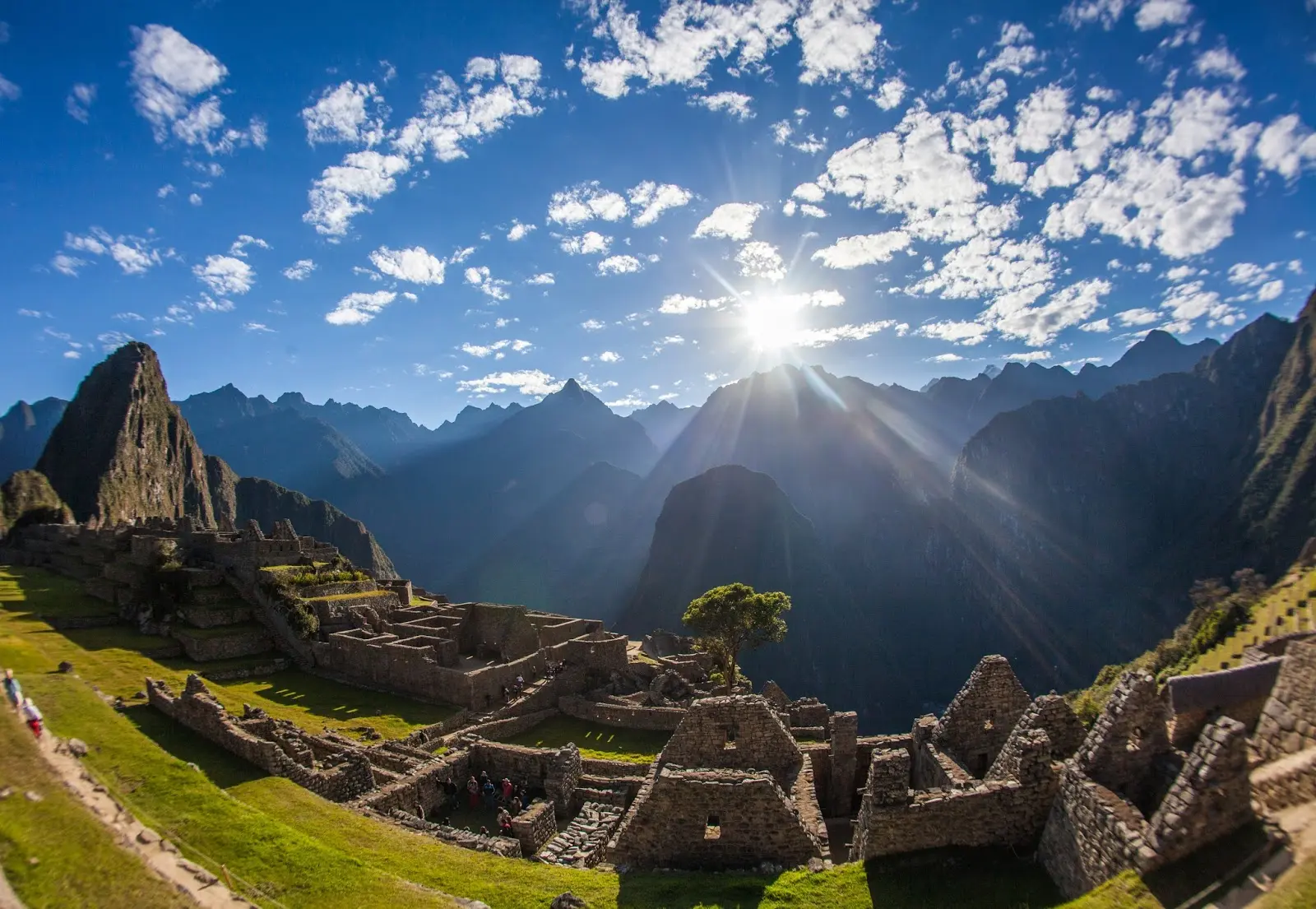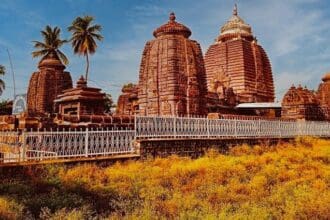Aurangabad, a city steeped in history and culture, is often referred to as the “City of Gates” due to its architectural marvels and rich heritage. Nestled in the heart of Maharashtra, this vibrant destination offers a perfect blend of ancient monuments, natural beauty, and modern attractions. Whether you’re a history enthusiast, a spiritual seeker, or someone looking for a serene escape, Aurangabad has something for everyone. In this guide, we’ll explore the top 7 tourist attractions in Aurangabad , providing detailed insights into their historical significance, architectural brilliance, and unique features. Let’s embark on a journey to uncover the hidden gems of this fascinating city.
1. Ajanta Caves: A UNESCO World Heritage Site
The Ajanta Caves are undoubtedly one of the most iconic landmarks in Aurangabad and a must-visit for anyone exploring the region. Located approximately 100 kilometers from the city, these ancient rock-cut caves date back to the 2nd century BCE and are renowned for their exquisite frescoes and sculptures.
Historical Significance
The Ajanta Caves were rediscovered in 1819 by a British officer during a tiger-hunting expedition. These caves served as Buddhist monasteries and prayer halls, showcasing the evolution of Buddhism over several centuries. The intricate carvings and paintings depict stories from the Jataka tales, which narrate the previous lives of Gautama Buddha.
Architectural Marvels
There are 30 caves in total, each carved out of solid rock. The interiors are adorned with vibrant murals that have survived the test of time, thanks to the use of natural pigments. Cave 1 houses some of the finest examples of Buddhist art, including the famous painting of Bodhisattva Padmapani. Cave 26 is another highlight, featuring a massive reclining Buddha statue symbolizing Nirvana.
Travel Tips
- Best Time to Visit: October to March, when the weather is pleasant.
- Entry Fee: INR 40 for Indians and INR 600 for foreigners.
- Guided Tours: Hiring a local guide is highly recommended to gain deeper insights into the caves’ history.
Nearby Hotels and Restaurants
For those planning an extended stay, nearby accommodations include:
- Hotel Green Olive: Known for its comfortable rooms and proximity to the caves.
- Taj Residency Aurangabad: Offers luxury amenities and fine dining options.
- Local Eateries: Try authentic Maharashtrian cuisine at Panchavati Gaurav or indulge in multi-cuisine delicacies at Mitra Samrat Restaurant .
2. Ellora Caves: A Testament to Religious Harmony
Another UNESCO World Heritage Site, the Ellora Caves , is located about 30 kilometers from Aurangabad. This archaeological wonder comprises 34 caves representing three major religions—Buddhism, Hinduism, and Jainism—making it a symbol of religious harmony.
Historical Context
Constructed between the 5th and 10th centuries, the Ellora Caves reflect the coexistence of diverse faiths during ancient times. Each cave tells a unique story through its architecture and artwork, offering visitors a glimpse into India’s rich cultural tapestry.
Key Highlights
- Kailasa Temple (Cave 16): Carved entirely out of a single rock, this temple is dedicated to Lord Shiva and is considered one of the largest monolithic structures in the world.
- Cave 32 (Indra Sabha): A masterpiece of Jain architecture, featuring intricately carved pillars and celestial motifs.
- Cave 10 (Vishwakarma Cave): Known for its stunning chaitya hall and seated Buddha statue.
Travel Tips
- Timing: Arrive early in the morning to avoid crowds and enjoy a peaceful experience.
- Photography: Photography is allowed but flash photography is prohibited inside the caves.
- Comfortable Footwear: Wear sturdy shoes as the terrain can be uneven.
Nearby Hotels and Restaurants
- Lemon Tree Hotel Aurangabad: Offers modern amenities and a rooftop restaurant.
- WelcomHotel Rama International: Ideal for families, with spacious rooms and kid-friendly facilities.
- Dining Options: Savor local flavors at Amrit Sweets or opt for global cuisines at Grand Thadiya Restaurant .
3. Bibi Ka Maqbara: The Mini Taj Mahal
Often referred to as the “Mini Taj Mahal,” Bibi Ka Maqbara is a striking monument built in memory of Rabia Durrani, the wife of Mughal Emperor Aurangzeb. Its resemblance to the Taj Mahal makes it a popular attraction among tourists.
Architectural Features
Designed by Ata-Ullah, the architect behind the Taj Mahal, Bibi Ka Maqbara boasts elegant minarets, marble domes, and lush gardens. While smaller in scale compared to its counterpart in Agra, it exudes charm and elegance.
Gardens and Surroundings
The sprawling gardens surrounding the mausoleum provide a serene ambiance, making it an ideal spot for leisurely walks and photography.
Travel Tips
- Entry Fee: INR 25 for Indians and INR 300 for foreigners.
- Best Time to Visit: Evening hours offer breathtaking views against the backdrop of the setting sun.
Nearby Hotels and Restaurants
- Hotel Kohinoor Executive: Budget-friendly accommodation with basic amenities.
- Keys Select Hotel RRR: Mid-range hotel with excellent service and dining options.
- Food Recommendations: Don’t miss the mouthwatering biryani at Al Zaika Family Restaurant .
4. Daulatabad Fort: A Fortress of Legends
Perched atop a hill, Daulatabad Fort is a testament to medieval military architecture. Originally known as Devagiri, this fort was once the capital of the Yadava dynasty before being renamed by Muhammad bin Tughluq.
Historical Importance
The fort’s strategic location made it impregnable, earning it the title “The Unconquerable.” It played a pivotal role in various battles and witnessed numerous dynastic changes throughout history.
Exploring the Fort
Visitors can explore the fort’s labyrinthine passages, towering walls, and underground tunnels. The Chand Minar, a towering victory tower, stands tall within the premises, offering panoramic views of the surrounding landscape.
Travel Tips
- Footwear: Wear comfortable shoes as climbing the fort requires physical effort.
- Hydration: Carry water bottles, especially during summer months.
Nearby Hotels and Restaurants
- Hotel Ambassador Ajanta: Offers clean rooms and friendly staff.
- Hotel Ashoka Executive: A budget-friendly option close to the fort.
- Must-Try Dish: Malvani seafood at Sai Palace Restaurant .
5. Grishneshwar Temple: One of the Jyotirlingas
Located near the Ellora Caves, Grishneshwar Temple is one of the twelve Jyotirlingas, making it a significant pilgrimage site for Hindus. Dedicated to Lord Shiva, the temple attracts devotees from across the globe.
Spiritual Significance
According to legend, the temple was constructed by Queen Ahalyabai Holkar in the 18th century. Pilgrims believe that visiting Grishneshwar fulfills their wishes and brings prosperity.
Temple Architecture
The temple’s red stone structure features intricate carvings and a central sanctum housing the lingam. Festivals like Mahashivratri see large gatherings of devotees.
Travel Tips
- Respect Local Customs: Dress modestly and remove footwear before entering the temple.
- Timings: Open from 5:30 AM to 9:30 PM daily.
Nearby Hotels and Restaurants
- Hotel Preeti Continental: Simple yet cozy accommodation.
- Hotel Manmandir Executive: Offers complimentary breakfast and Wi-Fi.
- Local Delicacies: Try puran poli and sabudana khichdi at Shree Sai Pure Veg Restaurant .
6. Panchakki: The Water Mill of Aurangabad
Panchakki , also known as the Water Mill, is a unique attraction that combines engineering ingenuity with spiritual serenity. Built in 1695, this mill uses water energy to grind grains and serves as a resting place for pilgrims.
Engineering Marvel
Water from a nearby spring is channeled through underground pipes to power the mill. The system reflects advanced hydraulic technology of the era.
Surrounding Complex
The complex includes a mosque, tombs, and a library, creating a tranquil environment for meditation and reflection.
Travel Tips
- Photography: Capture the picturesque surroundings but respect privacy.
- Quiet Hours: Visit during weekdays for a quieter experience.
Nearby Hotels and Restaurants
- Hotel Manor Towne: Known for its hospitality and cleanliness.
- Hotel Rajmahal Executive: Affordable rates with essential amenities.
- Culinary Delights: Relish kebabs and tandoori dishes at Al Baik Fast Food Corner .
7. Aurangabad Caves: Hidden Treasures of the City
While overshadowed by Ajanta and Ellora, the Aurangabad Caves deserve recognition for their artistic brilliance. These 12 Buddhist caves are located on a hillside and showcase intricate carvings and sculptures.
Artistic Details
The caves feature chaitya halls, viharas, and stupas, reflecting the influence of both Hinayana and Mahayana Buddhism. Cave 7, with its ornate pillars and ceiling designs, is particularly noteworthy.
Scenic Views
The hilltop location provides stunning vistas of the city below, making it a favorite spot for nature lovers.
Travel Tips
- Accessibility: Hire a taxi or auto-rickshaw to reach the caves.
- Pack Essentials: Carry sunscreen, hats, and snacks.
Nearby Hotels and Restaurants
- Hotel Kailash Executive: Budget accommodation with warm hospitality.
- Hotel New Avadh Udgir: Offers clean rooms and basic facilities.
- Recommended Cuisine: Try misal pav and vada pav at Chaitanya Paranthas .
Conclusion
Aurangabad is a treasure trove of history, spirituality, and natural beauty. From the awe-inspiring Ajanta and Ellora Caves to the serene Panchakki, each attraction offers a unique experience. By exploring these 7 tourist attractions in Aurangabad , you’ll not only witness architectural wonders but also immerse yourself in the city’s vibrant culture. Plan your trip today and create memories that will last a lifetime!
10 FAQs About Tourist Attractions in Aurangabad
- What are the top tourist attractions in Aurangabad?
- Ajanta Caves, Ellora Caves, Bibi Ka Maqbara, Daulatabad Fort, Grishneshwar Temple, Panchakki, and Aurangabad Caves.
- How far are the Ajanta Caves from Aurangabad?
- Approximately 100 kilometers.
- Are the Ellora Caves open on Mondays?
- No, they remain closed on Mondays.
- Is there an entry fee for Bibi Ka Maqbara?
- Yes, INR 25 for Indians and INR 300 for foreigners.
- What is the best time to visit Aurangabad?
- October to March.
- Can I hire a guide at the Ajanta Caves?
- Yes, professional guides are available.
- What is special about Daulatabad Fort?
- It’s known for its impenetrable design and historical significance.
- Which festivals are celebrated at Grishneshwar Temple?
- Mahashivratri and Shravan month celebrations.
- What is Panchakki famous for?
- Its water-powered grinding mill and serene ambiance.
- How many caves are there in Aurangabad Caves?
- There are 12 caves in total.














